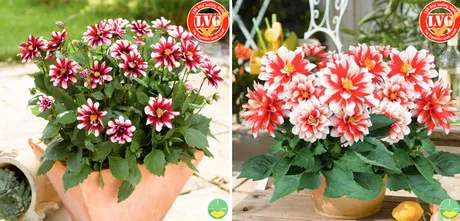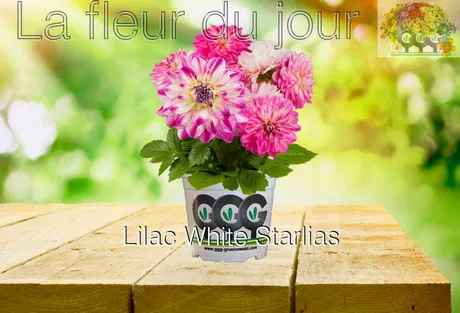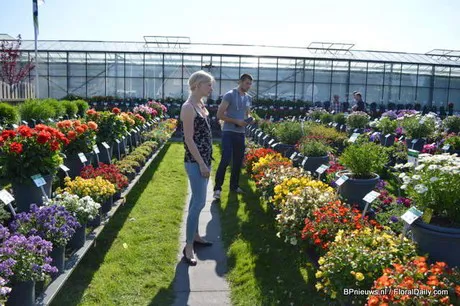
The Dahlia Starlias 'Bicolor Red-White' and 'Bicolor Neonorange-White. These bi-colored dahlias are part of the Dahlia 'Starlias'. Currently, the series consist of 17 varieties in a wide color spectrum from uni-colour to bi-color. Dahlia 'Starlias' are medium in growth and suitable for 12 cm pot production, and early in flowering. All 'Starlias' are being cultivated from vegetative cuttings.
More open to bi-colors
According to Scholz, people are more open to new colors at the moment. "All over the world, we notice an increase in demand for striking colors and especially the bi-colored varieties. Approximately five years ago, when we just introduced the Dahlia "Starlias' series, there was no market for bi-colored varieties, but now, our bi-colored dahlias are the top sellers in the 'Starlias' series," says Scholz.
Change in genetics
Next to colors, the genetics are of great importance. According to Scholz, when breeding new varieties, they need to take into account the entire chain from the cutting till transport from the customer to the retail. "Over the years, a lot changed for this traditional dahlia," says Scholz. "Firstly, Growers increasingly ask for plants that flower early. The market is becoming more and more early over the years. Secondly, they want plants that are more compact, therefore, more plants can be placed in the greenhouse and during transport. Finally, the growing habits of the entire series need to be uniform as growers often choose a collection of colors to grow," says Scholz.

Increasing demand
Even though the dahlia is a quite traditional plant, the demand is still increasing and according to Scholz, this is mainly due to the fact that they are adapting to these trends and demands quickly and their reduced royalty rate. "In general, our aim is to to keep the dahlias attractive in all aspects, for everyone in the entire chain, and it seems to pay off. We see the demand rising year after year, not only for the bi-colored, but also for the uni-colored varieties," he says.
Extensive trials
GGG Grünewald breeds all its varieties in their own breeding department in Germany. However, before adding a new variety to their assortment, they are extensively being tested in internal and external trials. "We participate in the well known trials of the independent trial stations all over Germany and many of our genetics have scored high," he says.

GGG Grünewals at the FlowerTrials 2015.
FlowerTrials
When the novelties successfully pass the tests, they are added to the assortment and presented to the growers in June, at the FlowerTrials. During this event, held from June 14-17, several breeders will showcase their novelties at different locations in the Westland and Aalsmeer region in the Netherlands and Rheinland Westfalen region in Germany. GGG Grünewald will showcase their novelties at their propagation location in the Netherlands, in the Westland region.
For more information
GGG Grünewald
Yoav Scholz
Email: yoav.scholz@ggg-gruenewald.com
www.ggg-gruenewald.com
